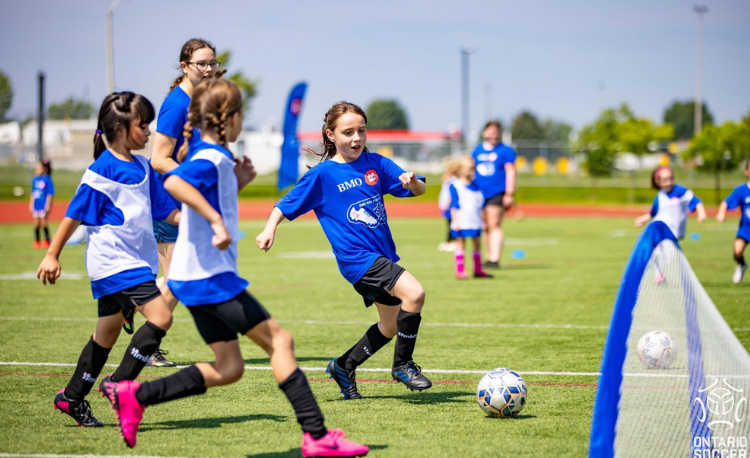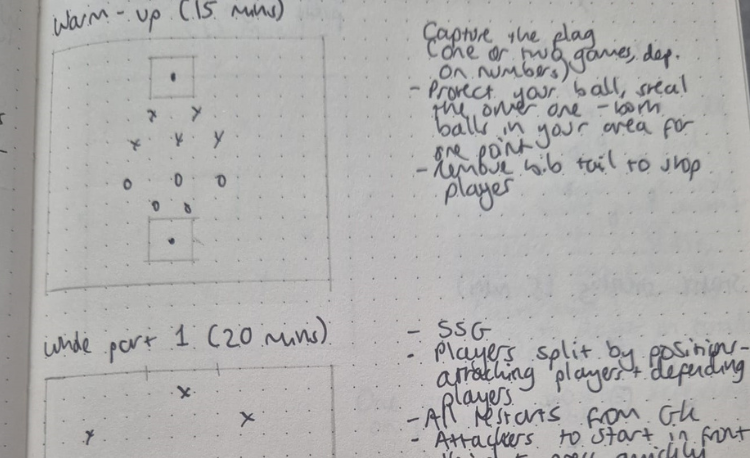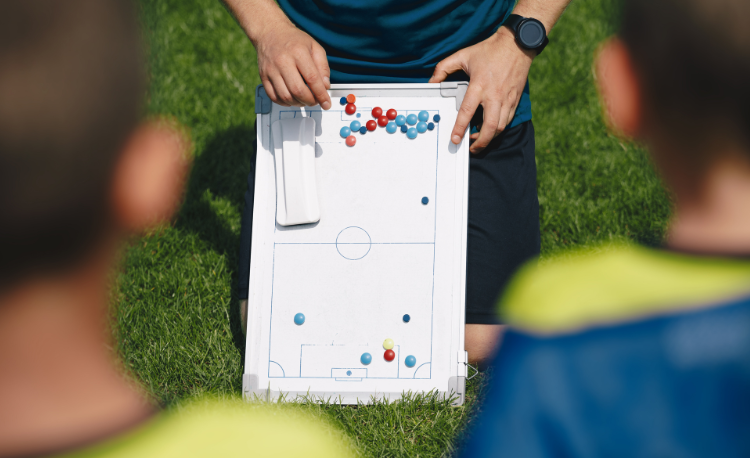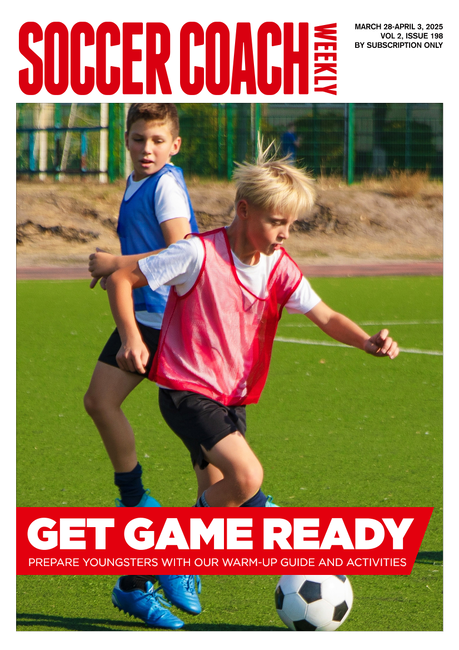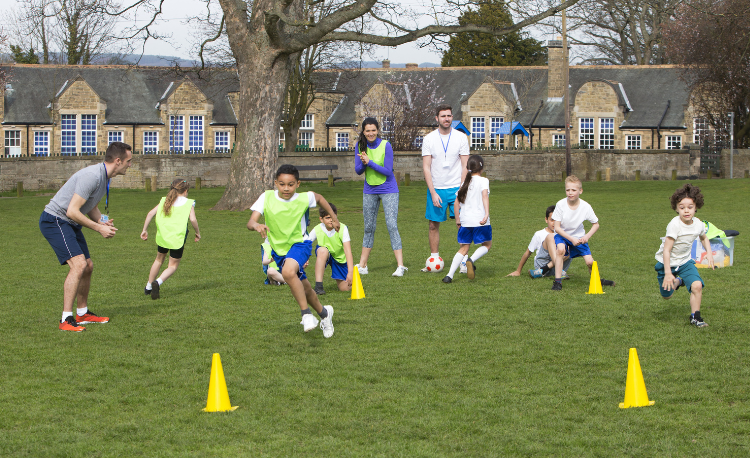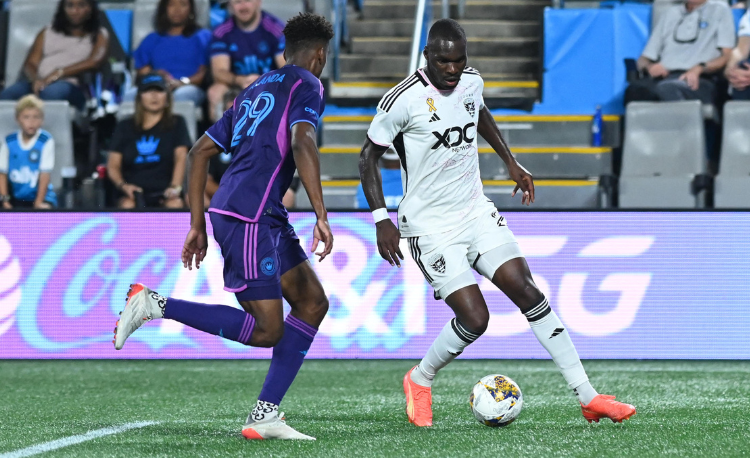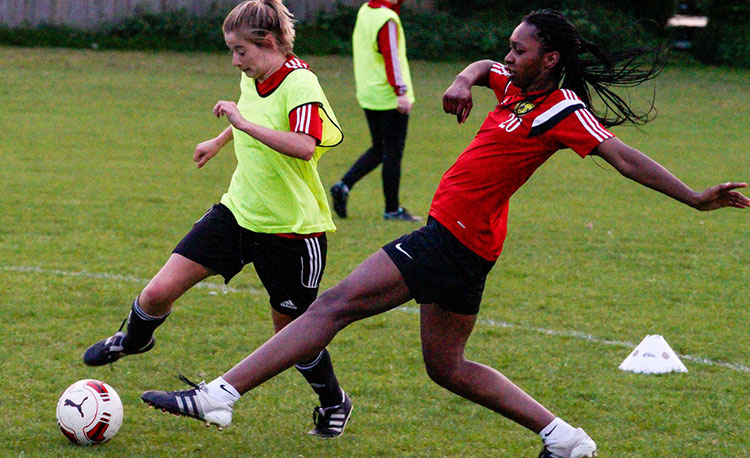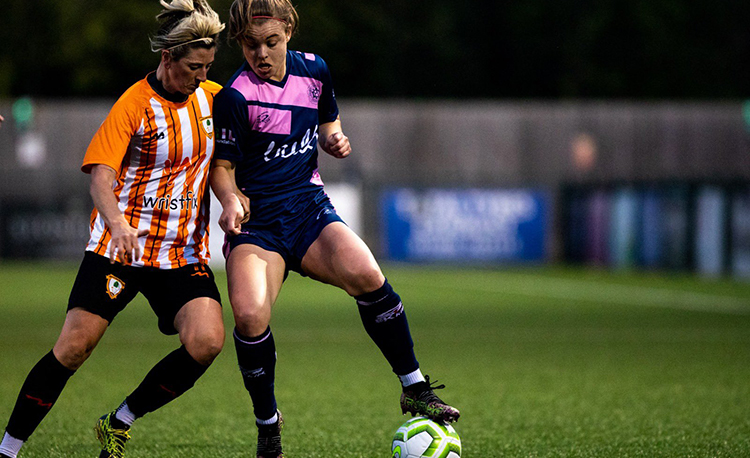Structuring a soccer training session: 'Whole-part-whole'
It’s where you play two games, with a practice between them. SCW consultant coach Carl Wild explains how to use it and the benefits it brings to players.
The ‘whole-part-whole’ style of training session is growing in popularity.
In this format, players play two games, with a practice sandwiched in the middle.
Often, this involves starting with a fully opposed game, before moving into an unopposed, unopposed-with-interference or semi-opposed practice, then back into a game.
The benefits of using the ’whole-part-whole’ format
The question we often get asked at training is: "Are we going to play a game?".
It’s not much of a surprise, given that the thing children enjoy the most about being part of a team and playing soccer is participating in games, be it during a training session or against other teams.
If we want to grab their attention and keep them engaged, is there a better way than starting the training session with a game?
The whole-part-whole session also allows for learning in context, offering players the opportunity to see how a skill or concept relates to the game straight away, before practising it in a more isolated way, and then looking to translate it back into the game.
How to structure a ’whole-part-whole’ session
Typically, a ’whole-part-whole’ session will be structured as follows...
1. Opposed practice
The session starts with the whole group playing a game, or with smaller-sided games.
The key to this game is that any rules, restrictions or scoring systems are linked to the technique or skill they will work on during the second section of the practice.
The set up can also be altered slightly to allow for more focus on the technique, skill or concept the session is focused on.
2. Unopposed, unopposed with interference, or semi-opposed practice
Once the first game has finished, the players are then put into smaller groups to focus on the specific technique, skill or concept.
This allows the players to concentrate on the matter at hand in a more isolated environment.
The ‘part’ session, where the players are working on refining their technique or skill, can be any form of practice: unopposed, unopposed with interference, semi-opposed or opposed.
However, it is essential that it produces similar pictures to those they have just experienced and will shortly experience again.
Once the players move into the ‘part’, the role of the coach changes from being a facilitator to more of a teacher.
Within the ‘part’ practice, the coach will support the players in refining the technique or skill that is linked to the session focus.
3. Opposed practice
Players then go back into a game. This allows them to transfer what they have just practised straight into a realistic environment straight away.
The same rules, restrictions or scoring systems can be used to continue to highlight the focus of the session.
They can also be removed at some point to allow for free play, with the session focus still front of mind.
Example coaching points in a ’whole-part-whole’ session
Taking a session with a focus on long-range finishing as an example, we may approach it as follows...
1. Game
Make the area shorter than the standard one you would use with the group of players you are working with.
Shortening the length of the area reduces the amount of time that teams have to spend building up, allowing them to get to the finishing part of the game a lot quicker.
Cutting off the corners of the area allows for more play to go centrally, and therefore more focused towards goal.
Rules or a points system can be added to further support the session focus. For instance, we can split the area into thirds and give teams more points if they score with a shot from the middle third than if they scored from within the final third (which would be a short-range finish).
Alternatively, when a team first starts play, through a restart or by winning the ball, they can have a set number of points; say, five. Every time they play a pass, they lose a point until they attempt to score. If they do score, they get five points, minus the number of passes they made.
Or, they could get a point from a shot on target and more points for actually scoring.
Either one of these scoring methods will encourage the players to shoot more than they usually would.
At this stage of the session, the main role of the coach is to facilitate the game and identify which rules and constraints need to be added so that the players start shooting more.
2. Semi-opposed practice
This is played within the same area as the first game.
In a move from facilitator to more active coach, as the session moves into the ‘part’ practice, you should introduce the coaching points needed to support the players.
These could be:
- Just before you receive the ball, scan to see if you are in a position to have an attempt on goal
- If you can’t shoot first time, make sure your first touch allows your second touch to be a shot
- Select your shot type and perform the technique correctly
- If you can’t shoot, can you get the ball to a team-mate who can?
This provides the players with an opportunity to practice the session topic while receiving individual feedback that is specific to them.
The key element to this is that the players are placed in an environment, or situations, similar to those they have just experienced within the game, and will experience again when returning to it.
This will allow them to transfer their learning from the ’part’ into the next ’whole’.
3. Game
This is played within the same area as the first two parts of the session.
When moving back into the next ’whole’, the role of the coach continues to be that of an educator, in particular helping the players with this transfer of learning.
We need to identify key moments within the game when a player could have made a different decision, or they did not execute the required technique quite right.
When this happens, it is our job to support the player by reminding them what they just did in the ’part’ practice, and helping them perform it within the game.
To help with this transfer and learning process, the rules, constraints and points system used in the first game can be continued in this game.
However, at some point, these should be removed so the players can perform the focus of the session in a normal game.
This encourages them to make the right decisions, such as when and where to do it, within a game, rather than being encouraged to do so by the nature of the game.
Setting up a ’whole-part-whole’ session
When using this format, it can be helpful for session flow, and player engagement, if the ‘part’ practice can be easily set up and performed within the boundaries of the area in which the two games are played.
This means the transfer between the different elements of the session can be completed quickly with limited disruption, maximising the amount of time the players get to practice the topic.
Having areas marked out on the pitch that can then be used for the ’part’ practice can reduce disruption or delay in the transfer between different elements of the session.
These markings don’t necessarily have to form part of the game – we can just ask players to ignore them, or they can be used as part of a restriction or scoring system.
The key, as always, is in the planning.
’UP THE STEPS’ STRUCTURE: AT A GLANCE
Advantages
-
Provides the players with lots of opportunities to play in a ‘game’
-
Provides lots of opportunities for the goalkeepers to get time in goal
-
An effective way to measure the progression of the players within a session
-
Players instantly get to see how what they have learned applies in a game setting
Disadvantages
-
Planning can be quite challenging to ensure the session runs smoothly
-
Need to ensure any rules, constraints or scoring systems that are added to the games are relevant to the session topic
Related Files
Newsletter Sign Up
Coaches Testimonials
Subscribe Today
Discover the simple way to become a more effective, more successful soccer coach
In a recent survey 89% of subscribers said Soccer Coach Weekly makes them more confident, 91% said Soccer Coach Weekly makes them a more effective coach and 93% said Soccer Coach Weekly makes them more inspired.
*includes 3 coaching manuals
Get Weekly Inspiration
All the latest techniques and approaches
Soccer Coach Weekly offers proven and easy to use soccer drills, coaching sessions, practice plans, small-sided games, warm-ups, training tips and advice.
We've been at the cutting edge of soccer coaching since we launched in 2007, creating resources for the grassroots youth coach, following best practice from around the world and insights from the professional game.
